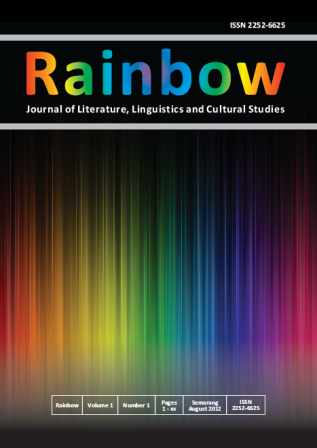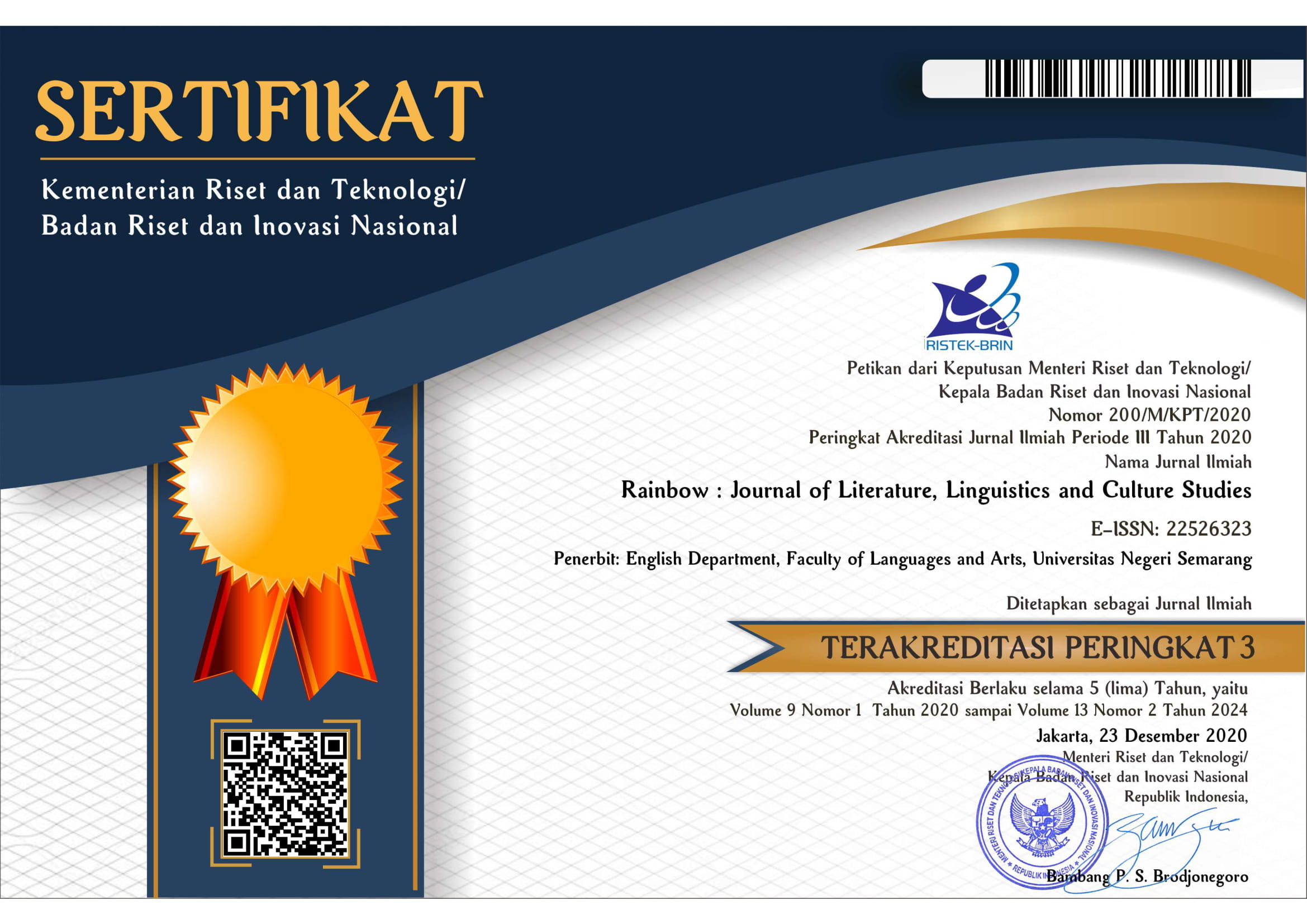THE GOD’S MORTALITY AS CULTURAL REPRESENTATION IN THE PELASGIAN CREATION MYTH
Abstract
The god’s mortality is an interesting topic to be discussed since people believe that god exists and appears like human. Besides, mortality is related human and very near to human’s life. There have been many events where the gods’ part of body is claimed to appear. Accordingly, this study aims to describe the gods’ mortality shown in The Pelasgian Creation Myth and explain the gods’ mortality portraits as cultural representation. The method of this study is a qualitative analysis by Barthes’ semiotics approach (1983; 1991). The data are collected from the myth text by reading, identifying, and inventorying based on Barthes’ semiotics. Then, the method of data analysis is based on literal meaning in the primary modeling system and the cultural meaning in the secondary modeling system. Ultimately, the final finding is done by contextualizing signifieds as cultural representation. This study finds: first, the gods’ mortality is described literally in the way they do, need, appear, and behave. Second, the gods’ mortality is the cultural representation of ancient Greek society and their surroundings. It is the connection between the humanism and the imagination manifestation of ancient Greek people. Both of them altogether create the gods’ mortality in the ancient time.







